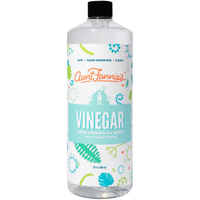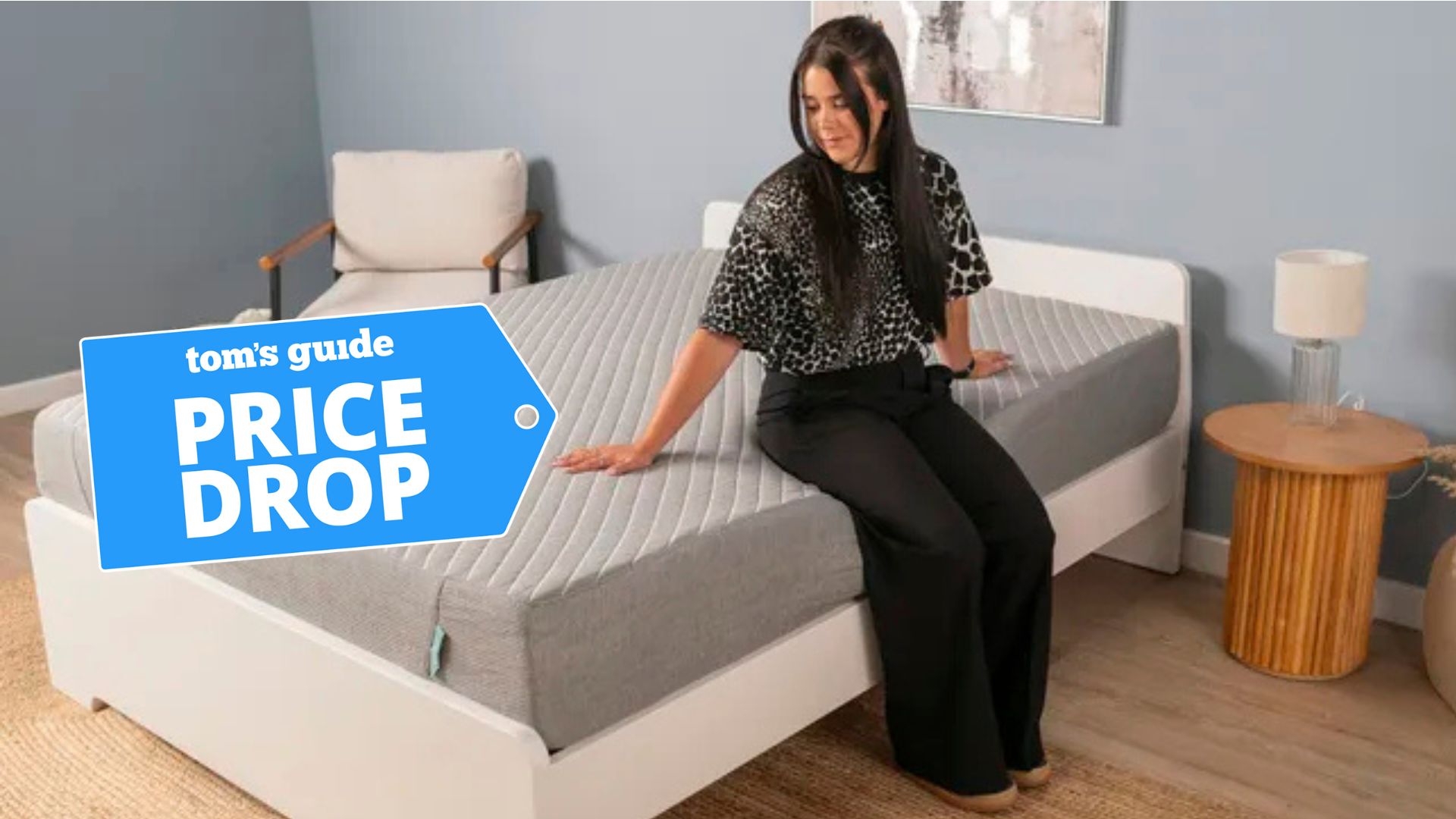How to build a non-toxic cleaning routine for your home
Give your cleaning closet a makeover this spring cleaning season
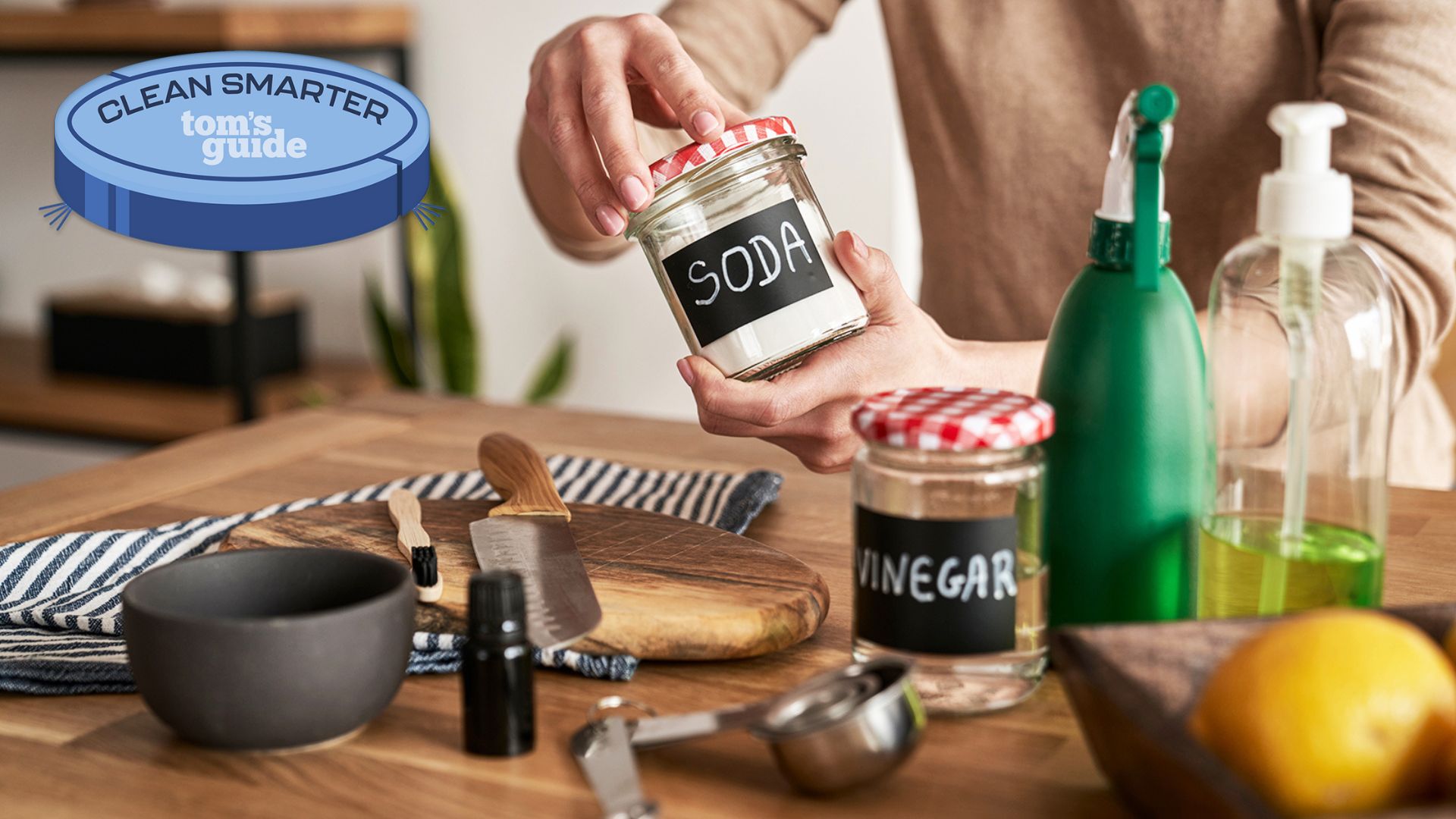
There’s nothing quite like a spotlessly clean home. But knowing which products to use can be tricky—especially if you want to avoid chemical cleaners.
With more people seeking alternative cleaning methods, more “natural” or “non-toxic” options are on the market than ever.
But how do you know which ones are legit and which are scams?
We spoke to two experts to learn how to build a non-toxic cleaning routine. They explained how to read the cleaning products' labels and use everyday household items to clean your home without chemicals.
What is non-toxic cleaning?
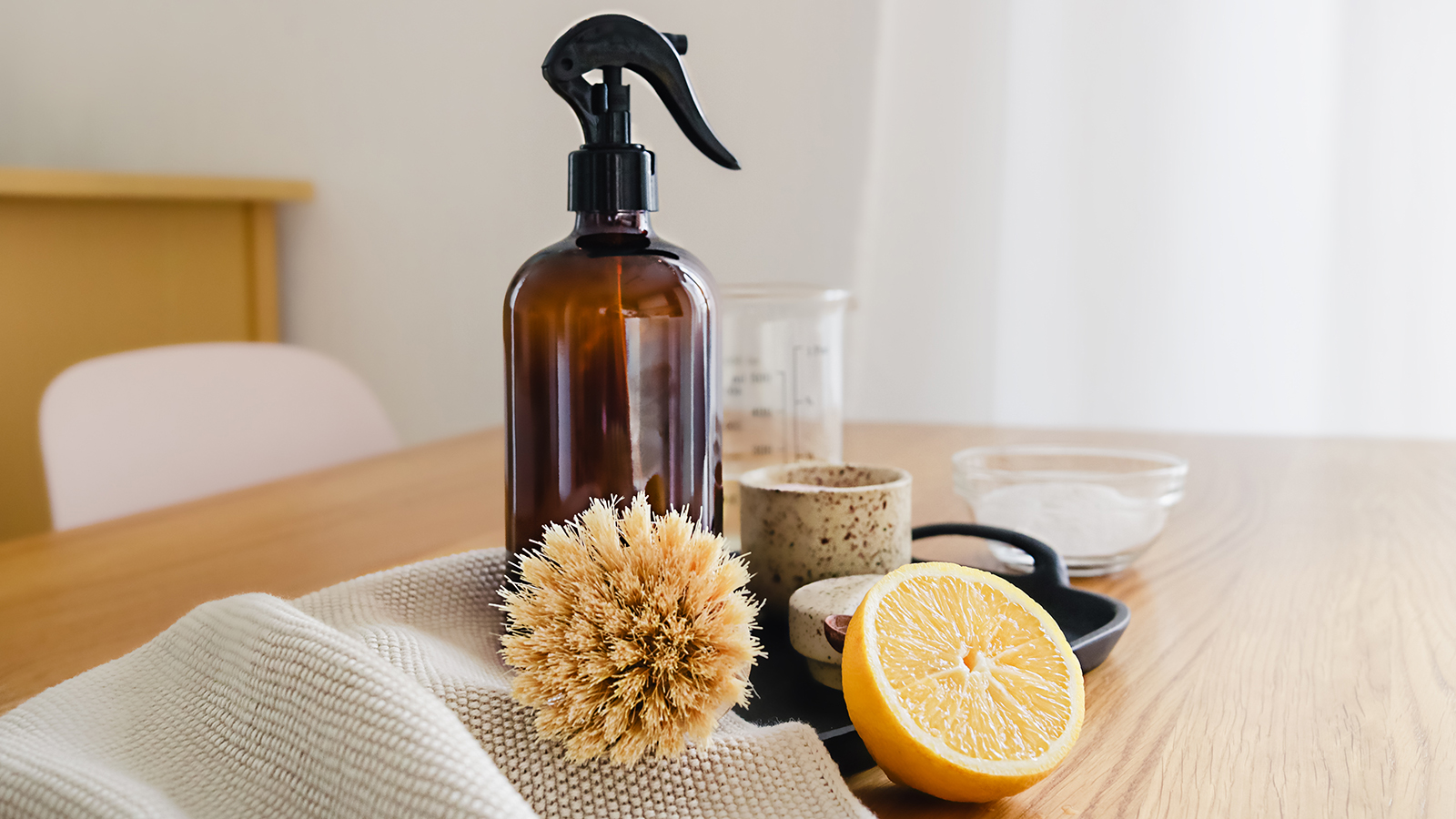
You might think that simply choosing a cleaning product that claims to be “non-toxic” or “natural” is enough, but those labels can be deceptive.
“The first thing to note when looking at the labels is that terms like ‘natural’ can often be misleading, as they aren't strictly regulated and don't guarantee a product is non-toxic or eco-friendly,” says Laura Ascher, founder of Our Oily House. “That is why focusing on the actual ingredients is key.”
Terms like ‘natural’ can often be misleading
If you can’t trust that a so-called “natural” product is made with natural ingredients, how are you meant to pick the right one? The key is learning how to read the ingredient labels.
Sign up to get the BEST of Tom's Guide direct to your inbox.
Get instant access to breaking news, the hottest reviews, great deals and helpful tips.
“Avoid anything with phosphates, chlorine, and VOCs (volatile organic compounds) as these additives can be harmful to both your health and the environment,” says Marla Mock, president of Molly Maid, a Neighborly company.
Instead, learn how to recognize natural alternatives to those chemical ingredients. “Look for all-purpose cleaners…that contain naturally derived ingredients like lauramine oxide, TEA lauryl sulphate and caprylyl glucoside—effective but safer alternatives,” recommends Mock.
Building your supply
Once you know what to look for, it’s time to start building your non-toxic cleaning supply cupboard. Ascher and Mock recommend purchasing white vinegar, baking soda, rubbing alcohol, hydrogen peroxide, witch hazel, and dish or Castile soap.
“You don’t need a cabinet full of store-bought cleaners to keep your home fresh and spotless,” says Mock. “A few simple, natural ingredients can do the job just as well—if not better.”
Here’s how these pantry (and cleaning closet) staples can keep your home spotless without dousing it in chemicals.
White vinegar
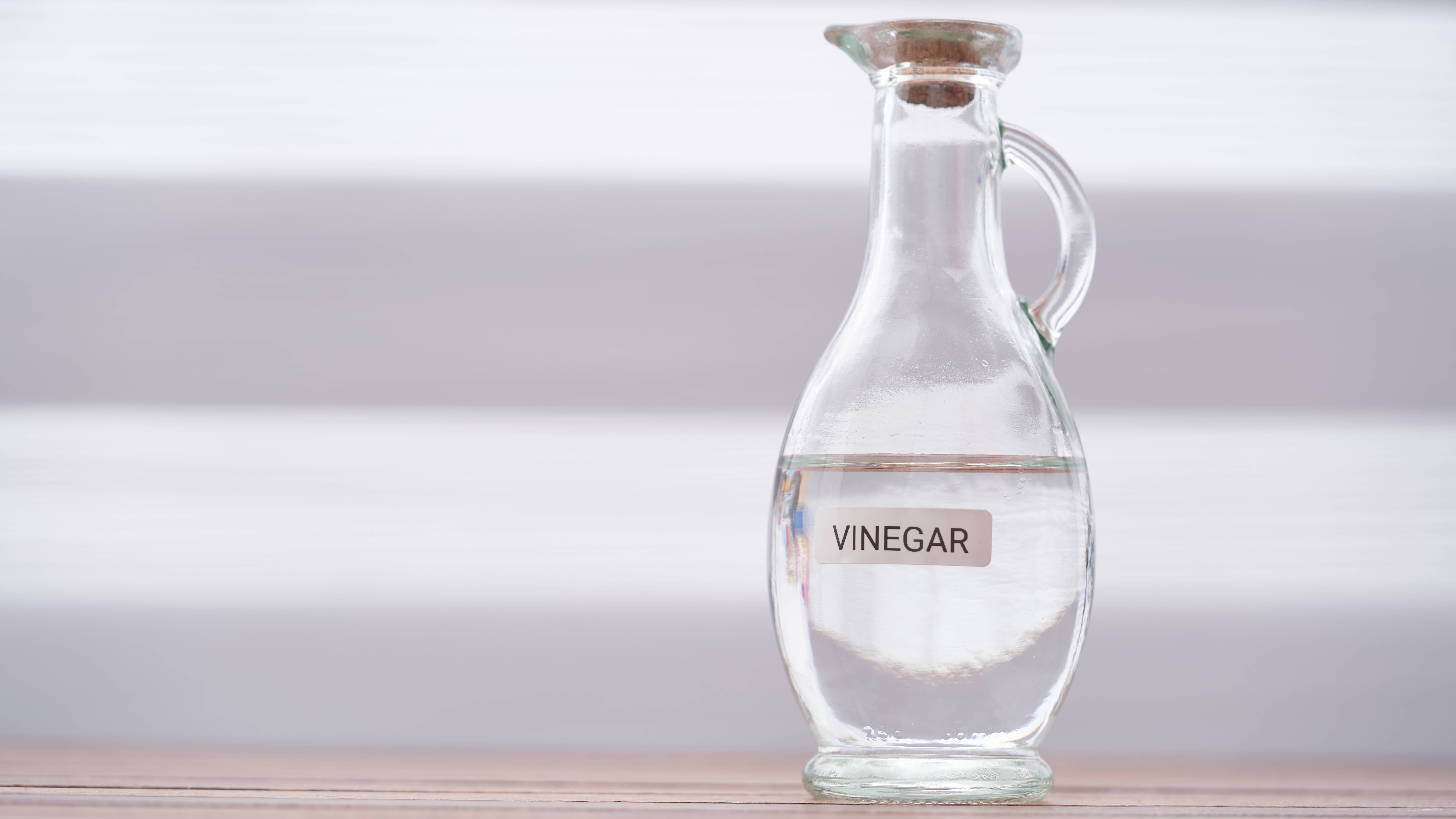
Vinegar is a staple in any household, whether you want to clean your kitchen or pickle some cucumbers. Keep a large container in your cleaning closet or under your sink to use around the house.
“White vinegar works as a natural disinfectant, cuts through grease, and removes odors,” Ascher says. Mock adds that vinegar can dissolve mineral buildup—a huge plus if you struggle with hard water stains in your home.
Not all vinegar is designed for cleaning, but this option from Amazon is extra strong and designed to blast through buildup. It can also be used to clean a variety of surfaces such as grout, porcelain, and stainless steel.
Baking soda
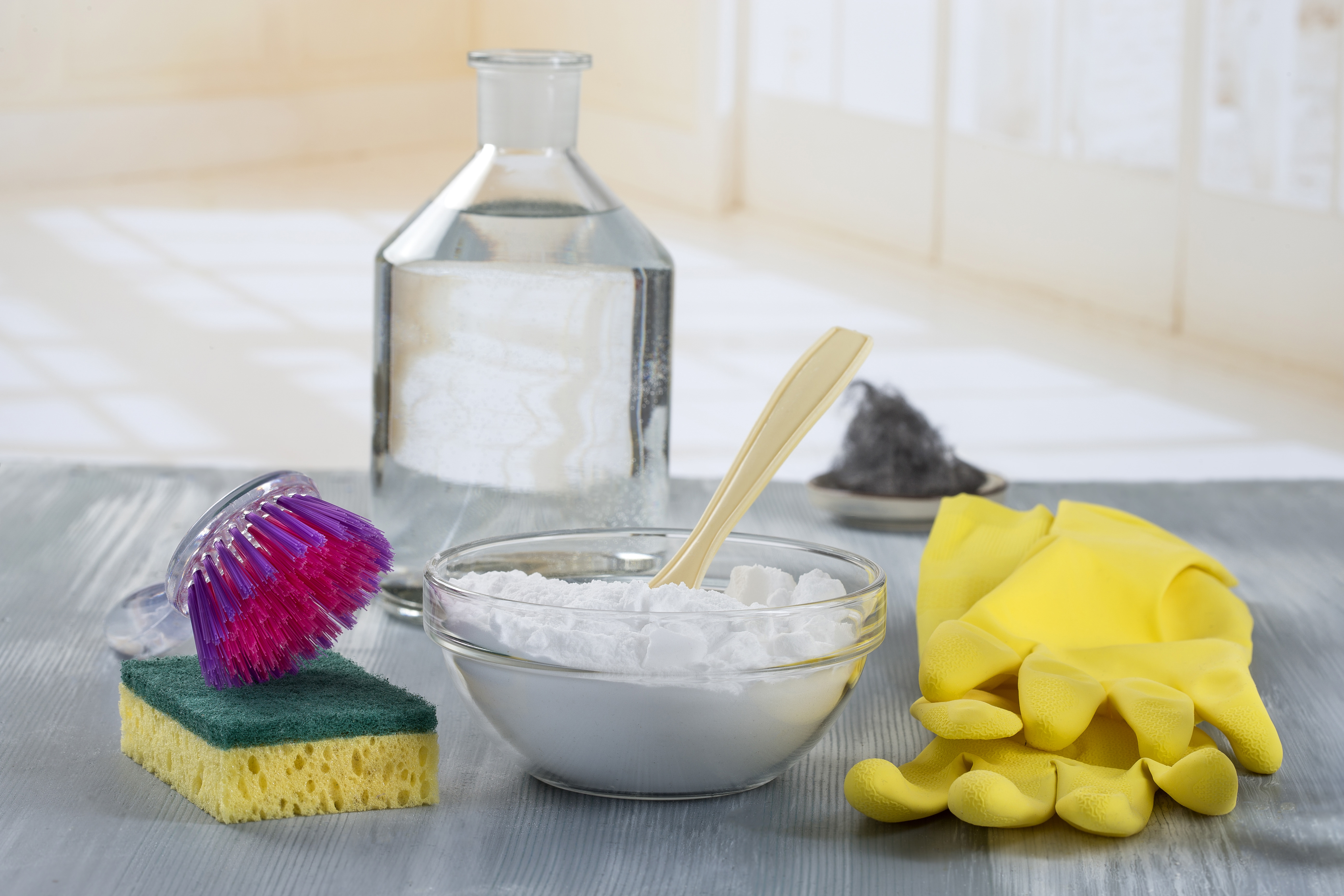
Baking soda helps baked goods, like muffins, cookies, and cakes—but it’s also a cleaning superstar. Also known as sodium bicarbonate, this ingredient is affordable and easy to find at your local grocery store—and a little bit goes a long way.
“Baking soda is perfect for scrubbing, deodorizing, and lifting stains,” says Ascher. You can use it for laundry, cleaning your bathroom, or deodorizing your refrigerator, among other uses.
Rubbing alcohol
Rubbing alcohol is an antiseptic and disinfectant that can be used to clean your home or disinfect a minor wound. You can find this ingredient at your local pharmacy or in the health section of a grocery store.
“Rubbing alcohol disinfects, degreases, and leaves glass streak-free,” explains Mock. It can kill germs on high-touch surfaces in your home to prevent you from getting sick, and it can even be used to make a DIY hand sanitizer.
Hydrogen peroxide
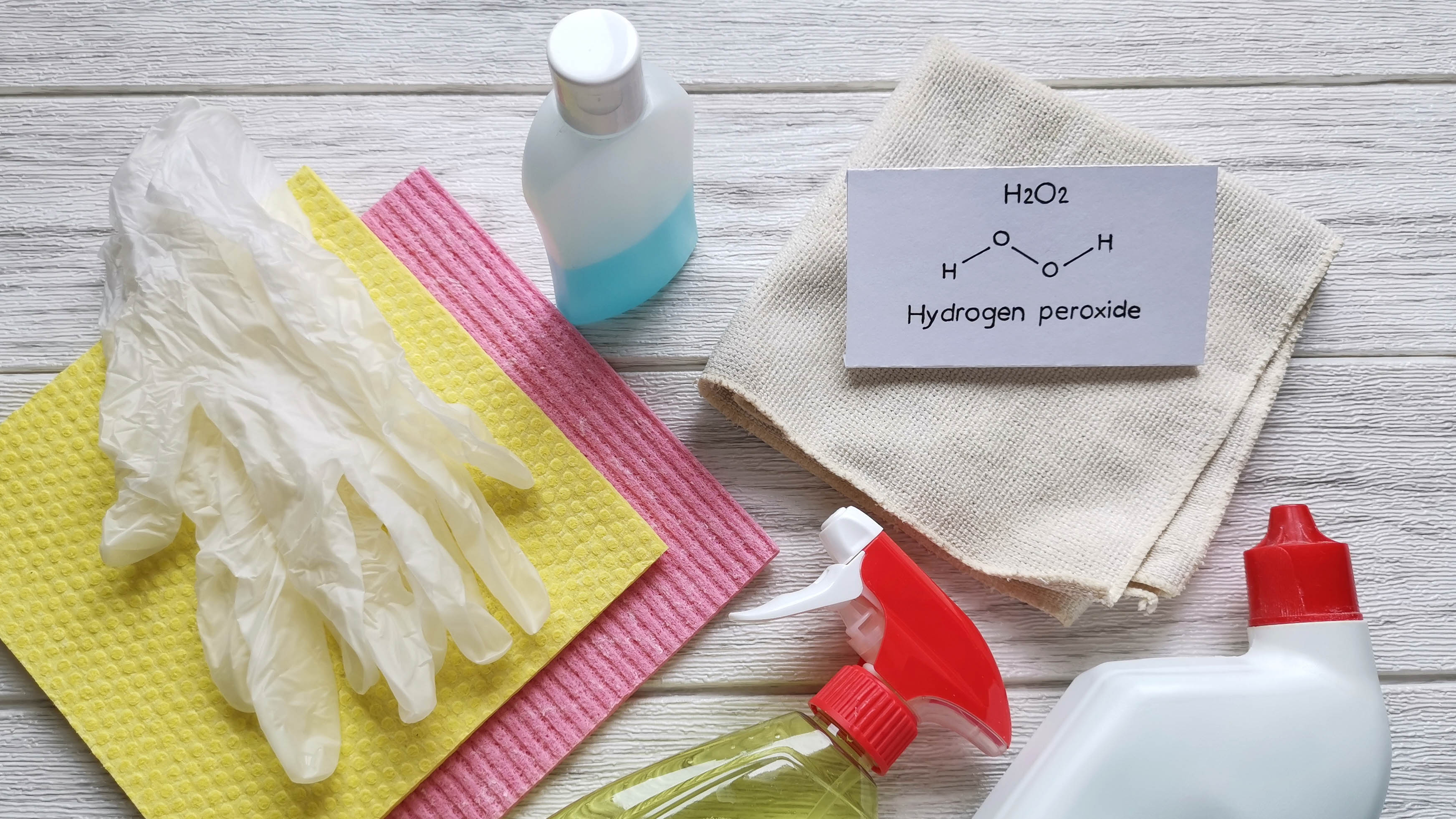
You might already have hydrogen peroxide in your home for treating minor cuts and scrapes, but it’s also a staple ingredient in your cleaning cabinet. “Hydrogen peroxide is great for brightening laundry, disinfecting surfaces, and tackling certain stains,” explains Ascher. It’s a disinfectant and bleaching agent, which makes it ideal for cleaning your home.
Mock adds that it can also fight mold and mildew, which makes it a must-have in damp rooms like your bathroom or kitchen.
Witch hazel
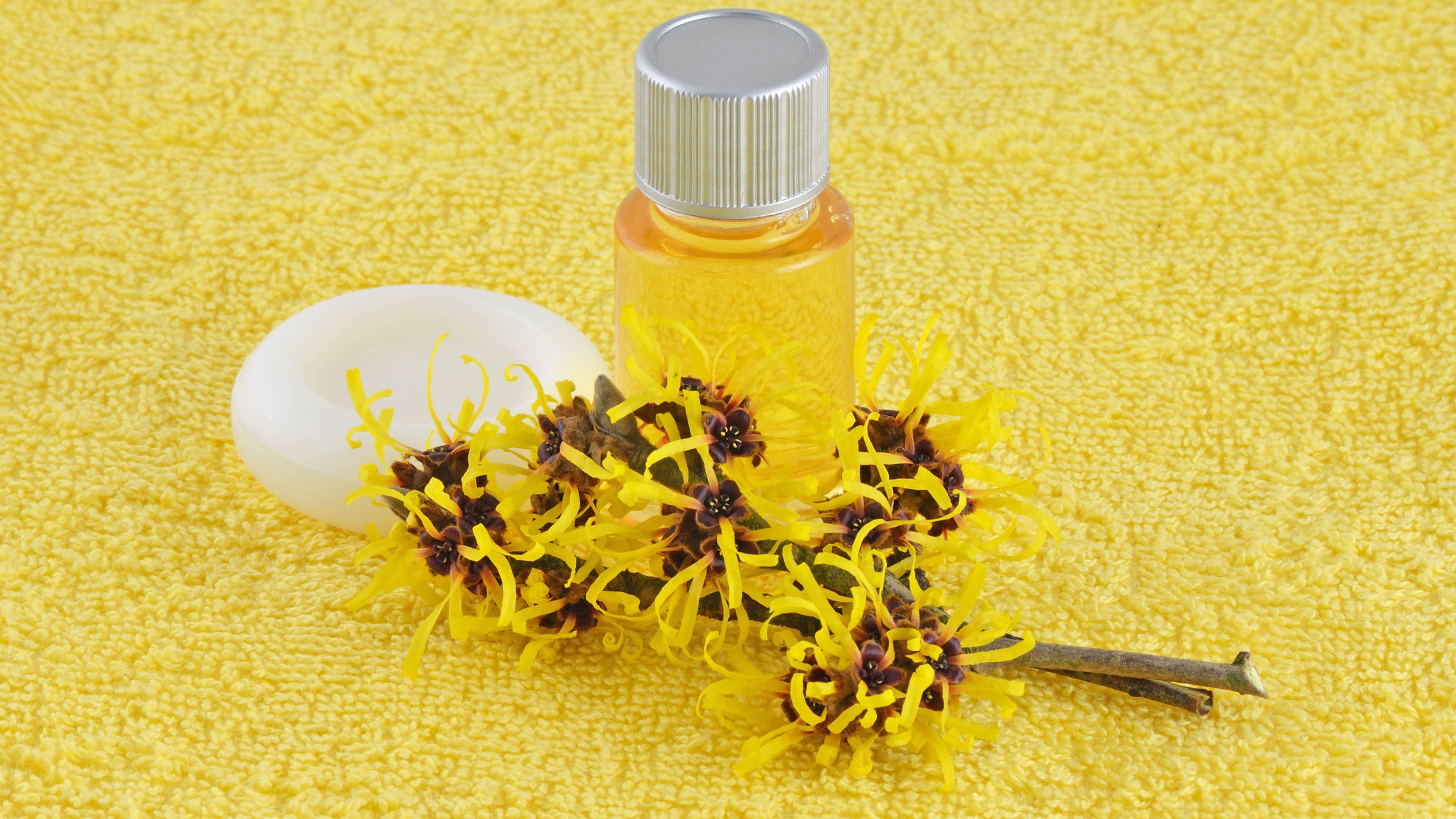
Witch hazel is a plant-derived astringent commonly used to treat acne and inflammatory skin conditions. But it’s also an excellent cleaning ingredient to keep in your arsenal.
“Witch hazel can be used as a multi-purpose cleaner that can help with cleaning and freshening surfaces, especially in DIY sprays,” says Ascher.
Dish soap or Castile soap
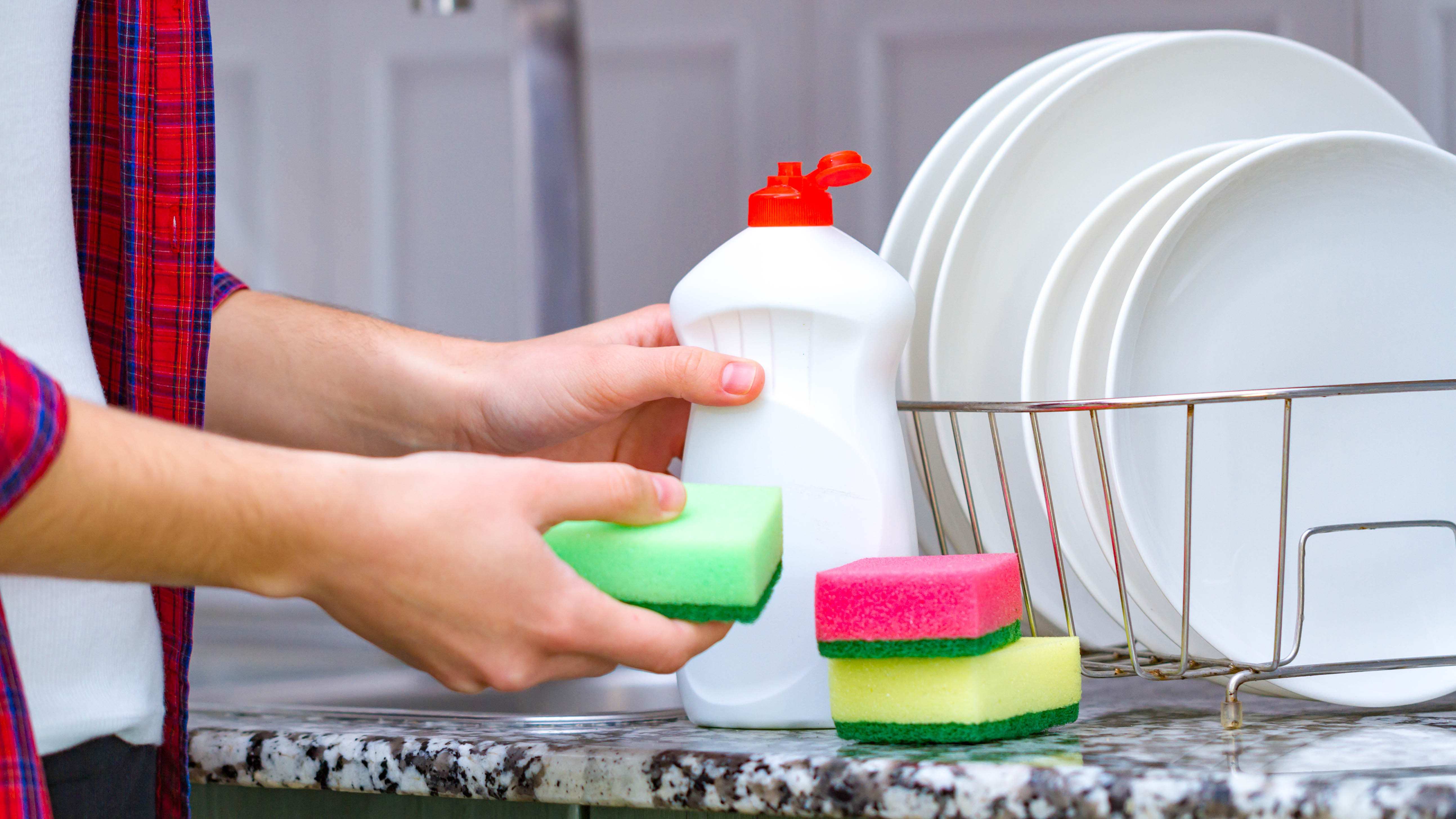
Dish soap is excellent at tackling greasy dinner plates and being a home-cleaning hero. You can also use Castile soap to clean your home from top to bottom.
“A good natural dish soap or Castile soap is essential for cleaning and cutting through grime while still being gentle on surfaces,” says Ascher. Mock also likes Castile soap, calling it a “plant based cleaner that lifts dirt and grime naturally.” Castile soap is often sold at grocery stores, though you might find a larger selection at your local health food store.
Intrigued? See our guide on five clever ways to use Castile soap around your home.
Creating Your Routine
Once you’ve stocked your cleaning cabinet with must-have ingredients, it’s time to build your cleaning routine. Here’s how our experts clean their homes, room by room.
Kitchen
A basic all-purpose cleaner is a necessity for any kitchen. Mock shares an easy recipe for a natural kitchen cleaner.
“Mix 1½ cups of baking soda, ½ cup of warm water, ½ cup of liquid soap, and 2 tablespoons of white vinegar in a spray bottle,” she recommends. “Shake well before each use, then apply to surfaces and scrub with a rag or sponge. Adding a bit of lemon juice increases the acidity, making it even more effective at cutting through grime while leaving behind a refreshing scent.”
Bathroom
Your bathroom gets grimy fast—especially in the tub or shower. “For [my homemade shower/tub scrub], I use 1 cup of baking soda, ¼ cup of Castile soap, and 2 tablespoons of hydrogen peroxide,” Ascher says.
“Use the back of a scrub brush to scoop the cleaner and apply it directly to the shower or tub walls. Then, spread the mixture evenly over the entire tub, paying extra attention to heavy grime and stubborn stains.”
The cleaner will need time to work its magic, so feel free to take a break during this time. “Let the cleaner sit for a few minutes to work its magic, then wipe off with a wet cloth and rinse clean,” Ascher says.
Living spaces

Your living and dining rooms see plenty of action, which means they are a haven for dust and dirt. Ascher recommends using a homemade all-purpose cleaner in your living space.
“For my multi-purpose cleaner, I use one part witch hazel and two parts distilled water, a few drops of soap, and 6 drops of orange essential oil for fragrance,” she says. Grab a spray bottle and mix the pre-measured ingredients together before adding the essential oil. To use, “Spray onto any surface that needs cleaning and wipe with a dry microfiber cloth,” says Ascher.
Laundry room
It’s tempting to break out a chemical stain remover to pre-treat your clothes before washing them. But Mock prefers using a simple, homemade stain remover.
“For an easy, effective stain remover, mix two parts hydrogen peroxide with 1/4-part baking soda and pour the solution into a spray bottle,” she says. “Spray directly onto stains, let it sit for about 15 minutes, then wash as usual. This solution helps lift stains without harsh chemicals.”
Bedroom
Over time, your mattress can accumulate sweat, dead skin cells, bacteria, and dust mites—all things you don’t want to be on your sleeping surface. Mock uses a homemade recipe to clean and disinfect her mattress.
“Mix equal parts hydrogen peroxide and water in a spray bottle and lightly mist your mattress,” she recommends. “This helps kill dust mites that feed on dead skin and dander, keeping your bed fresher and cleaner. Let it air dry before making the bed.”
Windows and mirrors
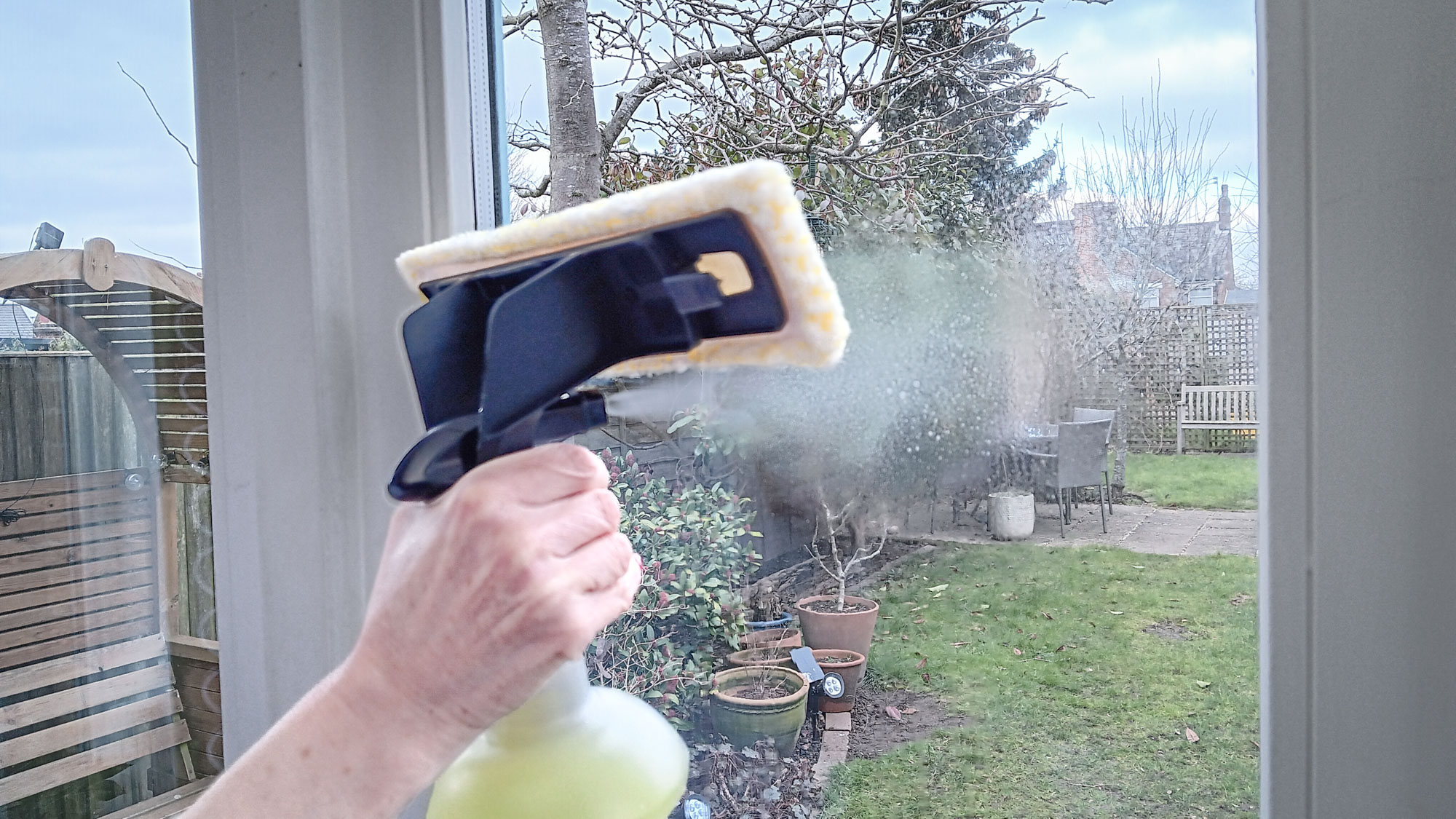
Store-bought glass cleaners leave your windows and mirrors clean and streak-free—but many contain unnecessary chemicals. Mock’s recipe leaves glass squeaky clean without the use of toxic ingredients.
“For streak-free windows and mirrors, mix 1 cup of water, 1 tablespoon of white vinegar, and 1 cup of rubbing alcohol in a spray bottle,” she says. “Wipe with a microfiber cloth or even newspaper for a flawless finish.”
She also recommends using this mixture to clean chrome, stainless steel, hard tiles, and similar surfaces.
Floors
Hard floor cleaners often contain ammonia, which can give off a strong smell. High concentrations of ammonia can cause health issues. Ascher prefers using a homemade floor cleaner in her home.
“I use ½ gallon of warm water, ¼ cup of white vinegar, and 1 teaspoon of olive oil,” she says. “Combine all the ingredients in a mop bucket and stir well. Place the mop into the solution, wring it out extra well, and mop the floor in the direction of the grain.”
Ascher recommends testing this cleaner in an inconspicuous area before using it on your entire floor to prevent accidental damage.
More from Tom's Guide

Catherine Hiles has over a decade of experience writing and editing on various topics, including home improvement, personal finance, home finances, pet ownership, and parenting. Her work has been featured on BobVila.com, TIME Stamped, The Penny Hoarder, and more. In her spare time, Catherine enjoys running, reading, spending time with her kids and dogs, and tackling projects around the house.
You must confirm your public display name before commenting
Please logout and then login again, you will then be prompted to enter your display name.
